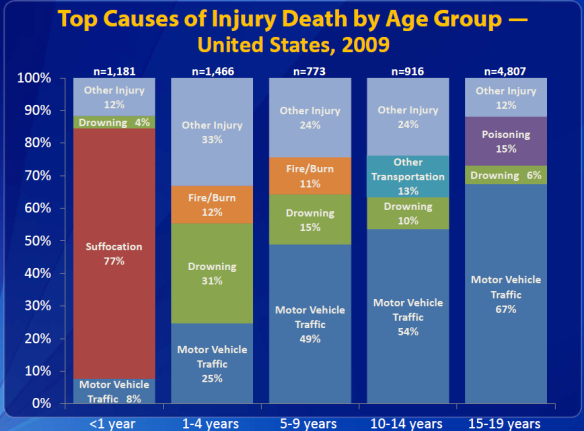 Summer is here, and many are enjoying the swim season. However, if children are not properly supervised at the pool, summer-time fun can quickly turn tragic.
Summer is here, and many are enjoying the swim season. However, if children are not properly supervised at the pool, summer-time fun can quickly turn tragic.
Drowning is the leading cause of injury death for children 1 to 4 years of age in the United States. (See HERE for 2017 National Safety Council statistics)

Centers for Disease Control and Prevention / CDC Vital Signs: Child Injury
Many of these injuries and deaths from drowning are foreseeable, controllable, and preventable. Pool owners can prevent the tragic impact the death or injury of a child brings to a family by following a few simple safety rules, but too often, proper safety measures are not taken, resulting in tragedy. What legal recourse is available to parents whose child has suffered serious pool related injury or death?
The answer to this question depends on the ability to prove negligence on the part of the pool owner. If your child’s injury is a result of the owner’s failure to follow safety regulations, you may have a strong case. Unfortunately, it is harder to determine pool injury liability than one might think. There isn’t a published “list” of all safety rules that apply, and the standards/rules may vary depending on the location and type of pool. This is why you need a lawyer to research what standards/rules apply to your situation and to determine how to best present your claim to the insurance company or jury.
One body of regulations that relate to pool safety can be found in Chapter 511-3-5 of the Rules of the Georgia Department of Human Resources Public Health. These “pool rules” contain a variety of standards that may assist your attorney in identifying what the owner/operator of the pool in question might have failed to do that led to your child’s injury. For instance, the regulations address such matters as diving boards, jump boards, beginner’s areas, decks, bather load limits (the maximum number of swimmers that can safely be allowed in the pool at one time), and required inspection reports.
Another source of duties for pool owners/operators are city and county ordinances. These need to be identified and researched by your attorney and the standards they contain will vary from jurisdiction to jurisdiction.
If the pool where your child was injured had a lifeguard, another important set of standards/rules for proving pool injury liability is what is known as the “standard of care” for lifeguards. An investigation can uncover whether the lifeguard(s) were properly trained, certified, and whether they performed their duties on the day of the injury to the “standard of care.”
The most basic applicable “standard of care” for lifeguards involves a “two-fold duty” that all lifeguards must fulfill. This “two-fold duty” is first, to observe simmers for signs of distress. Second, if distress is discovered, to attempt a reasonable rescue. In cases of pool injury or drowning, the central issue is to prove whether or not the lifeguard(s) had any ability to discover signs of distress prior to the injury or drowning. If so, than the lifeguard is liable for the injury/death.
In addition, if the lifeguard was required to abide by written standard operating procedures created by the owner/operator of the pool, whether or not they followed these procedures provides additional evidence that will help your attorney prove that the negligence of the lifeguard was the cause of the injury/drowning.
Whatever your particular circumstances, the core issue in any swimming pool injury/death lawsuit is liability – whether or not it can be proven that the injury or death resulted from negligence on the part of the pool owner. An attorney can help you navigate the complexities of proving liability and presenting your case to the insurance company or jury, providing you and your child with clear legal options.
This is a short PSA reminding everyone that drowning is a leading cause of injury death to children ages 1 to 14 and that we all need to be aware and do all we can to prevent these tragedies –
———————————
Attorney Pete Pearson practices personal injury law in Atlanta, Georgia and has a special interest in helping families of injured children. He is a father to nine and lives with his wife and children in Newborn, Georgia. His office is located in Conyers, Georgia. He can be reached directly at Six-Seven-Eight 358-2564.
